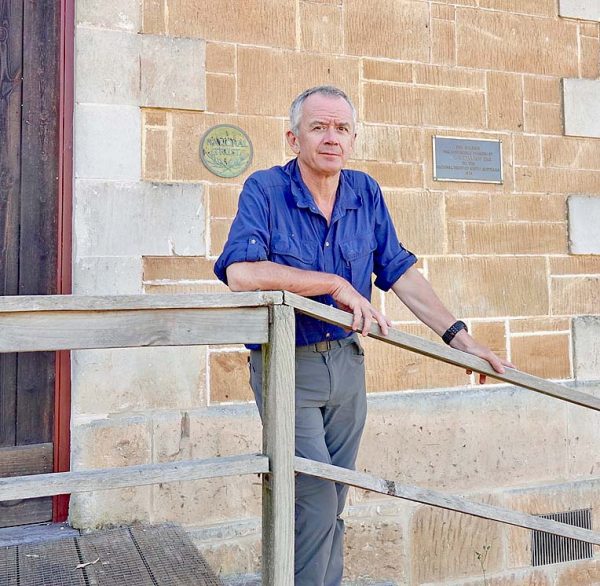
GLENCOE’S historic Leake Brothers woolshed was recently included on the itinerary of the re-enactment of an historic Colonial-era walk.
David Epstein, a Sydney-based business consultant and keen amateur photographer, passed through Glencoe during his walk from Queenscliff, Victoria, to Adelaide.
Mr Epstein said he was retracing a journey by George Ernest Morrison who later made his name as “Morrison of Peking”.
He said his fascination with Morrison and his travels began long ago.
“The story of Morrison’s walk from Queenscliff to Adelaide in 1880 fascinated me and I made early plans to do it, but never acted on it,” Mr Epstein said.
“It has taken me nearly 40 years to get to the Glencoe Woolshed, where Morrison was taken in by shearers for a meal.
“I think Morrison enjoyed his short stay in Glencoe, even though he had not planned to stop and later complained his ‘blanket was an old horse rug, and the fleas were strong’ and noted ‘there are no potatoes’ with dinner.”
“He spoke of a post dinner dance and playing dice for matches into the evening.
“Visiting Glencoe and the woolshed has been fascinating.
“Local people have been outstanding in their hospitality and willingness to share history that helps me flesh out the story of Morrison’s walk.”
Mr Epstein said the morning after staying in the Glencoe stables Morrison headed for Mount Graham homestead at Mount Burr, via the Overland Track, where he spent several days.
“That will be the next part of my walk, but it has been the hardest to retrace because Morrison was persuaded to leave the Overland Track after Mount Burr and to head for Mount Benson by back roads.”
Morrison, whose father founded The Geelong College, was just 18 at the time he passed through Glencoe, but kept a detailed diary of his experiences, including a night in a flea-ridden horse-stall at Glencoe Station.
Morrison subsequently published the story as “Diary of a Tramp” in a four-part series in The Leader, a Melbourne weekly newspaper, published by The Age.
It was to be the first step in a career that led him to make his name as an epic walker, traveller, foreign correspondent and, ultimately, political adviser to the first ever president of China.
He acquired the nicknames “Chinese Morrison” and “Morrison of Peking” on the strength of this and by being appointed the first ever Beijing correspondent for The Times (London) in 1895, a post he held until 1911.
This made him perhaps the most influential Australian internationally at the time.
Mr Epstein first learnt of Morrison and his “Diary of a Tramp” as a school boy at Geelong College.
“This walk will take me 38 days and I am trying to keep as close as possible to the original route,” he said.
“I got a few blisters initially, but I have not regretted a day of doing this.
“Morrison only walked on 36 days, but took 46 days to complete the journey.
“The main differences are that some places he stayed in have disappeared today, plus I will not be spending three days writing and kangaroo shooting at Mount Burr or any time shooting ducks with a muzzle-loader, north of The Coorong.”





